Where does Opus cyprense medieval goldwork embroidery come from? Simple question, right? After all, Opus anglicanum comes from England, and Opus teutonicum comes from Germany. Thus, Opus cyprense should come from Cyprus! Maybe. Medieval and later church inventories do mention vestments as being Opus cyprense. However, there has been relatively little research conducted on the medieval embroidery tradition of Cyprus. You will find that embroideries labelled as Opus cyprense are described as being made on Cyprus, Sicily or in those parts of the Byzantine Empire that were under Latin control. There’s precious little to back any of these claims up. Nevertheless, the Cathedral Treasury of Anagni in Italy holds four beautiful vestments adorned with this medieval goldwork embroidery technique.
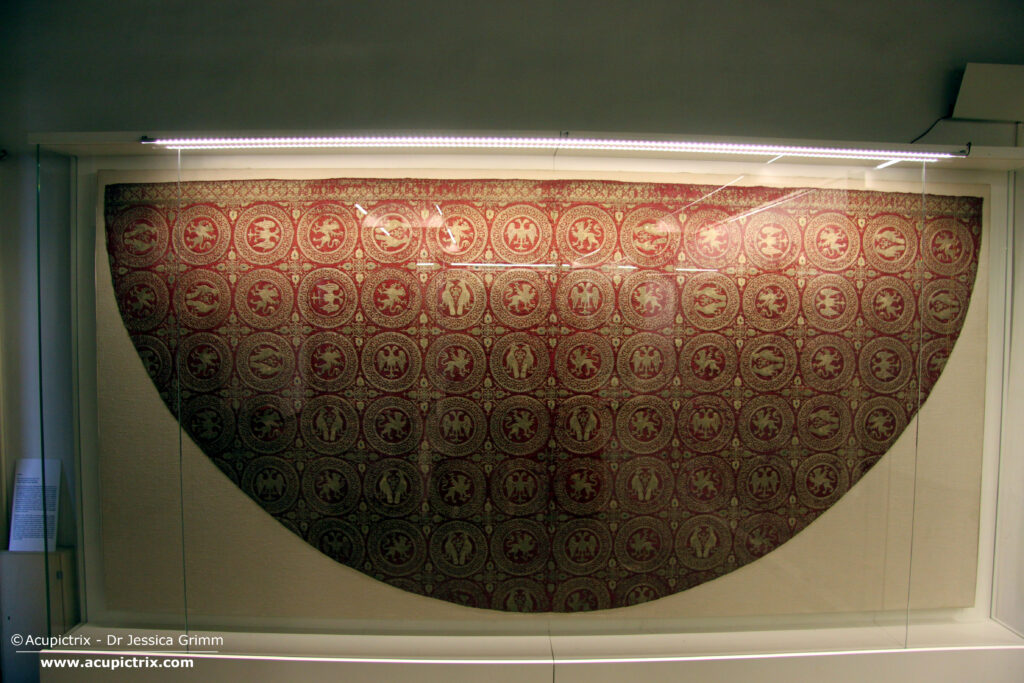
The four Opus cyprense vestments in Anagni Cathedral Treasury consist of a cope, a chasuble and two dalmatics—all pieces date to the 13th century (probably the second quarter). Only the cope is in its original configuration. A bell chasuble, together with other vestments, was cut up in the late 16th century to make the shorter chasuble and the two dalmatics we see today. However, the bell chasuble itself had started life as a secular half-circle mantle.
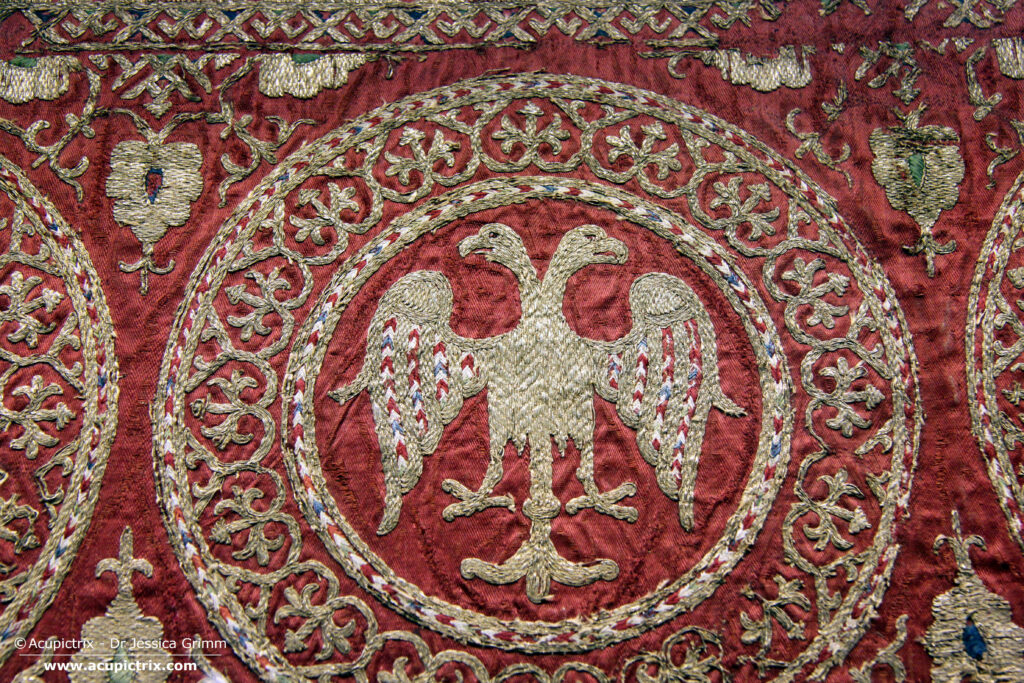
The Opus cyprense goldwork embroidery imitates woven silks from further East. The repeating roundels contain a double-headed eagle, griffons and parrots. The roundel frame features a lovely foliage motif that resembles linked hearts. The space between the roundels is filled with a geometric motif. All goldwork embroidery is executed with two parallel gold threads (silver gilt foil around a silken core) in normal surface couching on red samite. The silk embroidery is done with coloured filament silk in satin and split stitches. Flat silk for the cope and twisted silk for the other vestments.
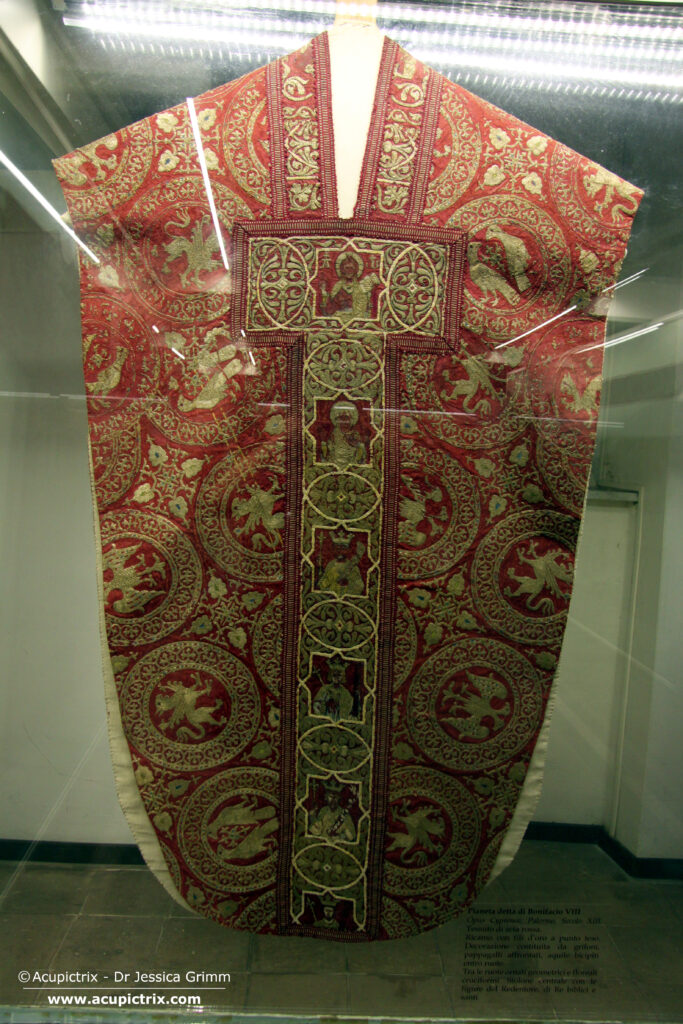
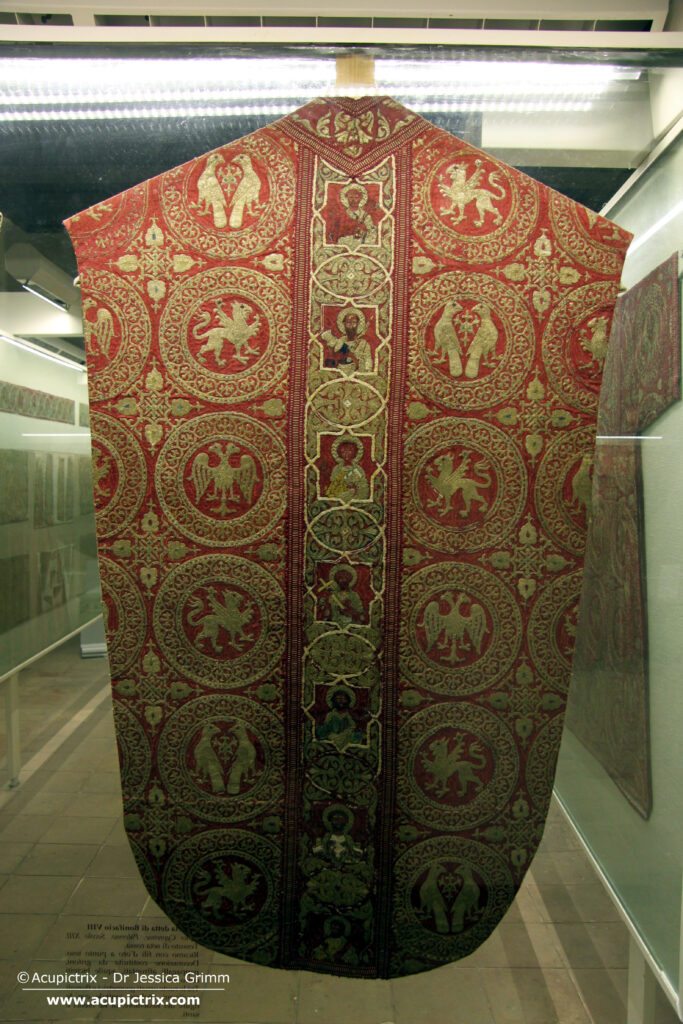
The best pieces of the former bell chasuble/secular mantle were used to make the newer, more fashionable chasuble at the end of the 16th century. The orphreys are thought to be the original ones, albeit cut, from the bell chasuble. Are they also Opus cyprense or might they have been made in the papal workshops?

When we look at the goldwork embroidery of the chasuble orphreys, we can see that it isn’t the same as that of the Opus cyprense of the rest. The filling of the ornaments with couched gold threads is less neat. The gold thread is also of lesser quality. On the other hand, the silk embroidery for the faces is quite detailed. The directional split stitch reminds me of Opus anglicanum. And see the white border? That looks a lot like the white padding used under freshwater pearls.
You are forgiven for thinking that the Opus cyprense embroidery of the cope and the original secular mantle (now chasuble and dalmatics) is the same and must have been made by the same hands. However, careful study has shown that the embroidery and the materials used differ considerably. The cope has the best embroidery with the highest quality materials. As the secular mantle was transformed into a bell chasuble by applying orphreys on the front and back, it appears that it was then copied by more skilled hands and with superior materials to form a matching cope.
Could it be that a pope was given a secular mantle in the early 13th century as a diplomatic gift? He or a successor decides to have it altered and turned into a bell chasuble by closing the front and adding the orphreys. The pope also decides that the chasuble needs a matching cope. Pope Boniface VIII gifted both to his hometown Cathedral of Anagni at the end of the 13th century. Without the more detailed study of the embroidery and the medieval embroidery production in the Mediterranean, we are at present unable to determine if Opus cypresne really means work from Cyprus.
Literature
Elster, C., 2018. Die textilen Geschenke Papst Bonifaz’ VIII. (1294-1303) and die Kathedrale von Anagni: Päpstliche Paramente des späten Mittelalters als Medien der Repräsentation, Gaben und Erinnerungsträger. Michael Imhof Verlag, Petersberg.
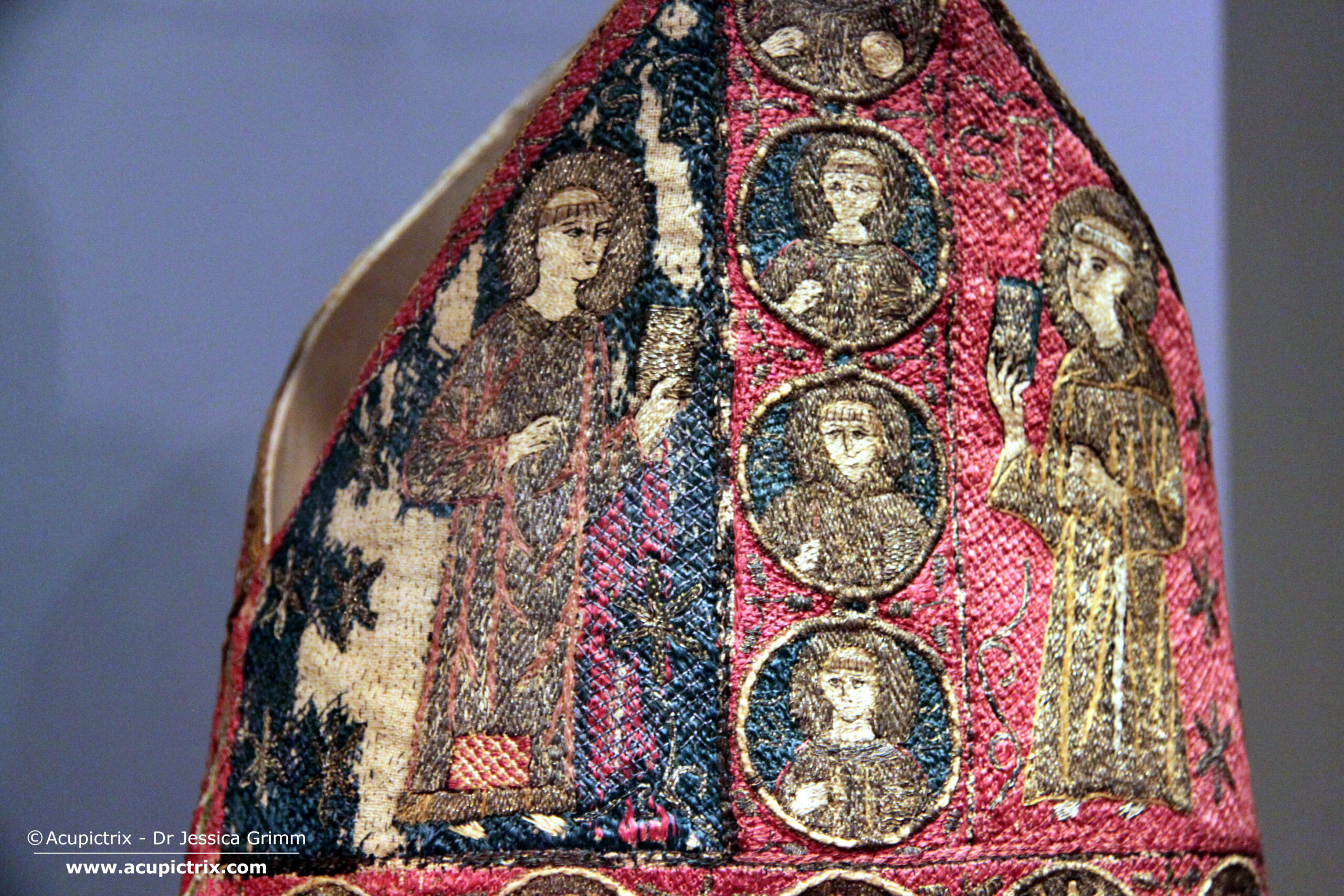
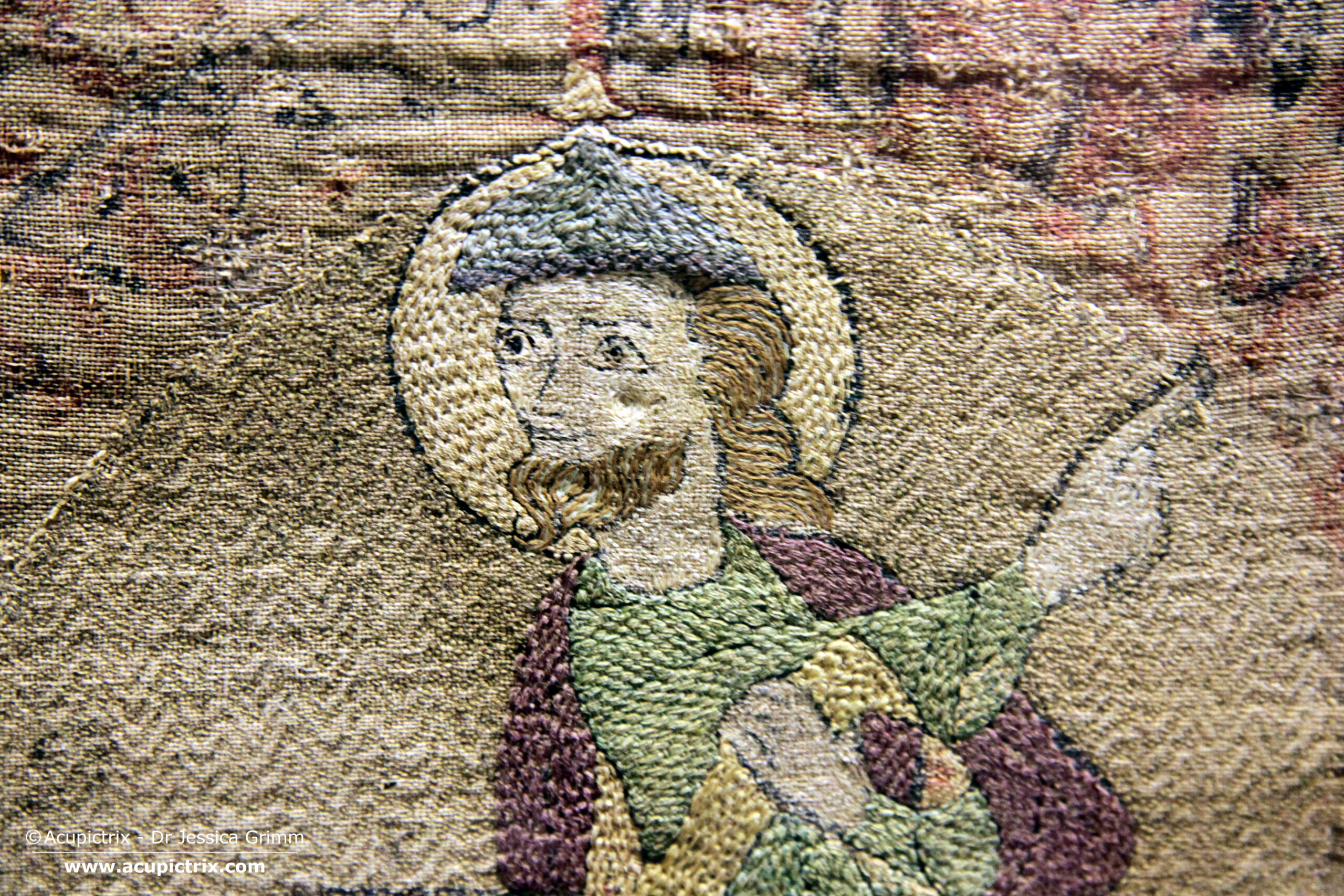

0 Comments